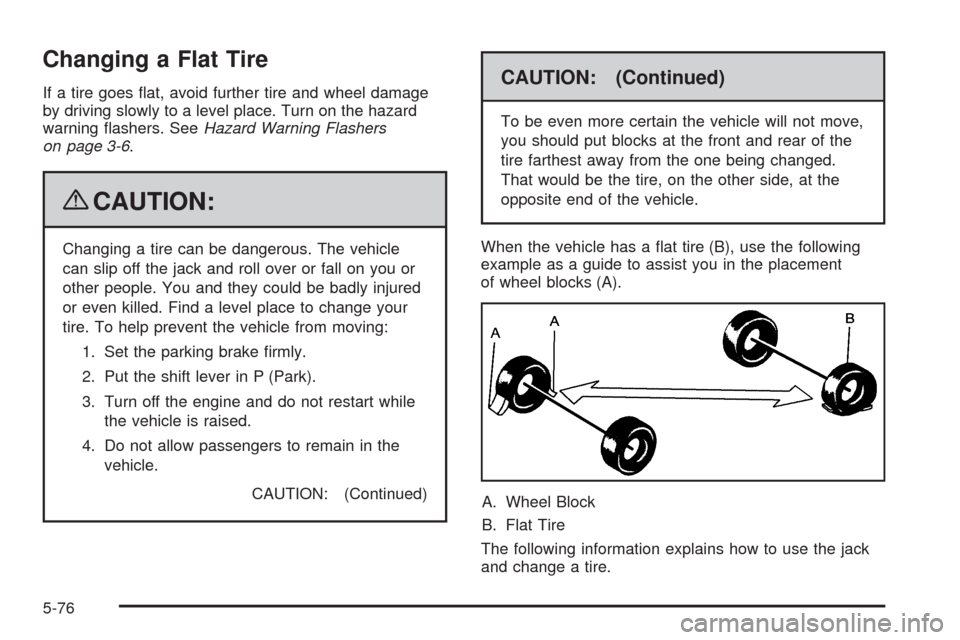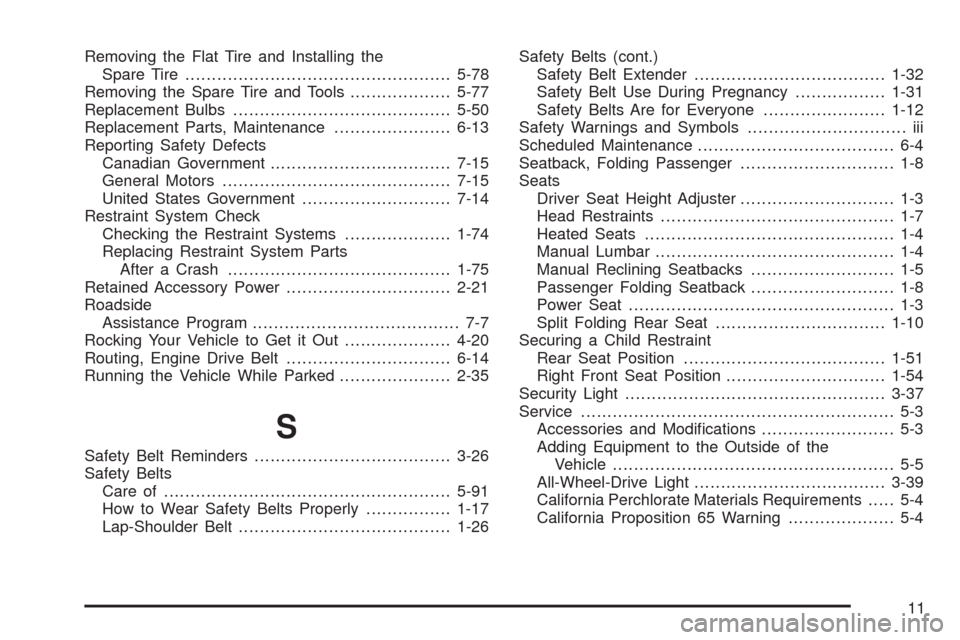Page 314 of 442

If the coolant is not at the proper level, repeat Steps 1
through 3 and reinstall the pressure cap. If the coolant is
not at the proper level when the system cools down
again, see your dealer/retailer.
Notice:If the pressure cap is not tightly installed,
coolant loss and possible engine damage may
occur. Be sure the cap is properly and tightly
secured.
Engine Overheating
The vehicle has several indicators to warn of engine
overheating.
You will �nd a coolant temperature gage on your
vehicle’s instrument panel. SeeEngine Coolant
Temperature Gage on page 3-32. There are also
several different types of engine overheating messages
that may be displayed in the Driver Information
Center (DIC). SeeDIC Warnings and Messages
on page 3-49.You may decide not to lift the hood when this warning
appears, but instead get service help right away.
SeeRoadside Assistance Program on page 7-7.
If you do decide to lift the hood, make sure the vehicle
is parked on a level surface.
Then check to see if the engine cooling fans are
running. If the engine is overheating, both fans should
be running. If they are not, do not continue to run
the engine and have the vehicle serviced.
Notice:Engine damage from running the engine
without coolant is not covered by the warranty.
Notice:If the engine catches �re while driving
with no coolant, the vehicle can be badly damaged.
The costly repairs would not be covered by the
vehicle warranty. SeeOverheated Engine Protection
Operating Mode on page 5-30for information on
driving to a safe place in an emergency.
5-28
Page 362 of 442

Changing a Flat Tire
If a tire goes �at, avoid further tire and wheel damage
by driving slowly to a level place. Turn on the hazard
warning �ashers. SeeHazard Warning Flashers
on page 3-6.
{CAUTION:
Changing a tire can be dangerous. The vehicle
can slip off the jack and roll over or fall on you or
other people. You and they could be badly injured
or even killed. Find a level place to change your
tire. To help prevent the vehicle from moving:
1. Set the parking brake �rmly.
2. Put the shift lever in P (Park).
3. Turn off the engine and do not restart while
the vehicle is raised.
4. Do not allow passengers to remain in the
vehicle.
CAUTION: (Continued)
CAUTION: (Continued)
To be even more certain the vehicle will not move,
you should put blocks at the front and rear of the
tire farthest away from the one being changed.
That would be the tire, on the other side, at the
opposite end of the vehicle.
When the vehicle has a �at tire (B), use the following
example as a guide to assist you in the placement
of wheel blocks (A).
A. Wheel Block
B. Flat Tire
The following information explains how to use the jack
and change a tire.
5-76
Page 439 of 442

Removing the Flat Tire and Installing the
Spare Tire..................................................5-78
Removing the Spare Tire and Tools...................5-77
Replacement Bulbs.........................................5-50
Replacement Parts, Maintenance......................6-13
Reporting Safety Defects
Canadian Government..................................7-15
General Motors...........................................7-15
United States Government............................7-14
Restraint System Check
Checking the Restraint Systems....................1-74
Replacing Restraint System Parts
After a Crash..........................................1-75
Retained Accessory Power...............................2-21
Roadside
Assistance Program....................................... 7-7
Rocking Your Vehicle to Get it Out....................4-20
Routing, Engine Drive Belt...............................6-14
Running the Vehicle While Parked.....................2-35
S
Safety Belt Reminders.....................................3-26
Safety Belts
Care of ......................................................5-91
How to Wear Safety Belts Properly................1-17
Lap-Shoulder Belt........................................1-26Safety Belts (cont.)
Safety Belt Extender....................................1-32
Safety Belt Use During Pregnancy.................1-31
Safety Belts Are for Everyone.......................1-12
Safety Warnings and Symbols.............................. iii
Scheduled Maintenance..................................... 6-4
Seatback, Folding Passenger............................. 1-8
Seats
Driver Seat Height Adjuster............................. 1-3
Head Restraints............................................ 1-7
Heated Seats............................................... 1-4
Manual Lumbar............................................. 1-4
Manual Reclining Seatbacks........................... 1-5
Passenger Folding Seatback........................... 1-8
Power Seat.................................................. 1-3
Split Folding Rear Seat................................1-10
Securing a Child Restraint
Rear Seat Position......................................1-51
Right Front Seat Position..............................1-54
Security Light.................................................3-37
Service........................................................... 5-3
Accessories and Modi�cations......................... 5-3
Adding Equipment to the Outside of the
Vehicle..................................................... 5-5
All-Wheel-Drive Light....................................3-39
California Perchlorate Materials Requirements..... 5-4
California Proposition 65 Warning.................... 5-4
11